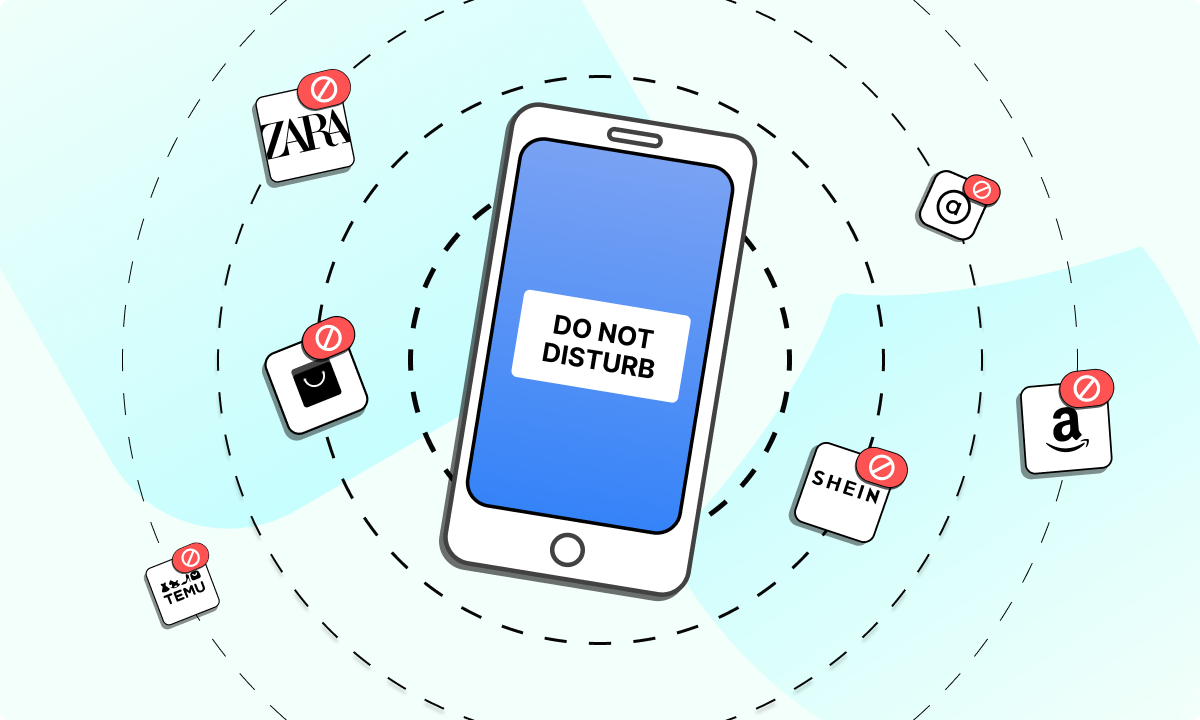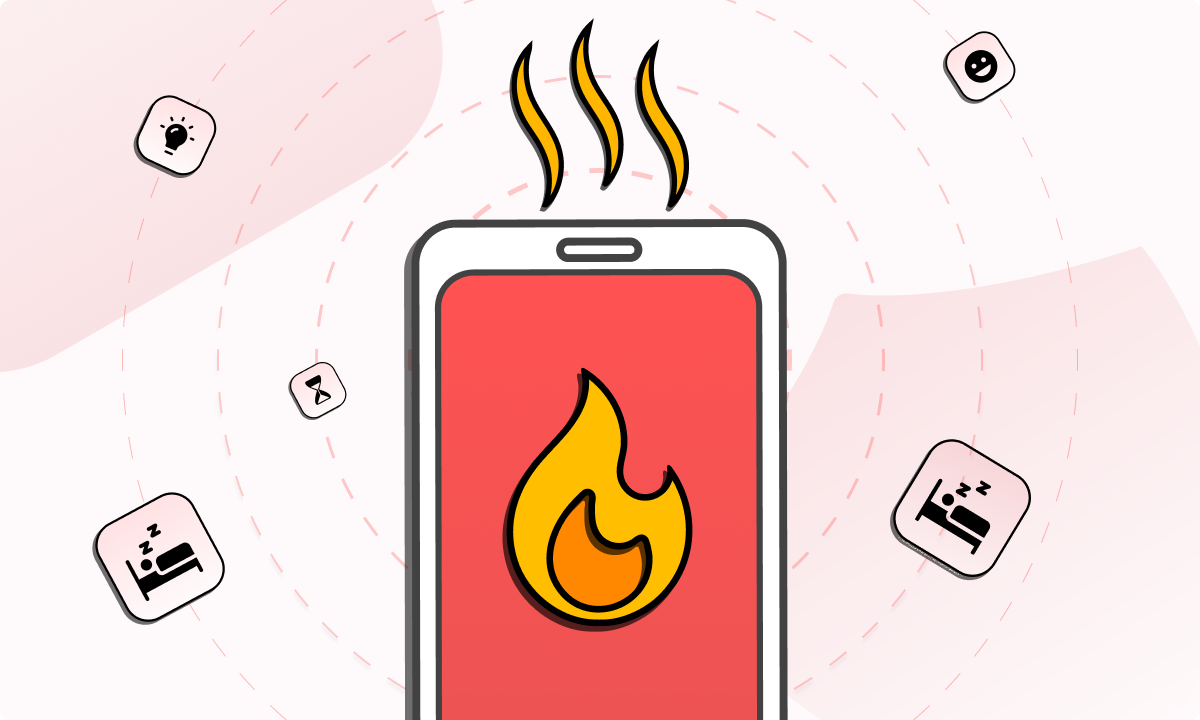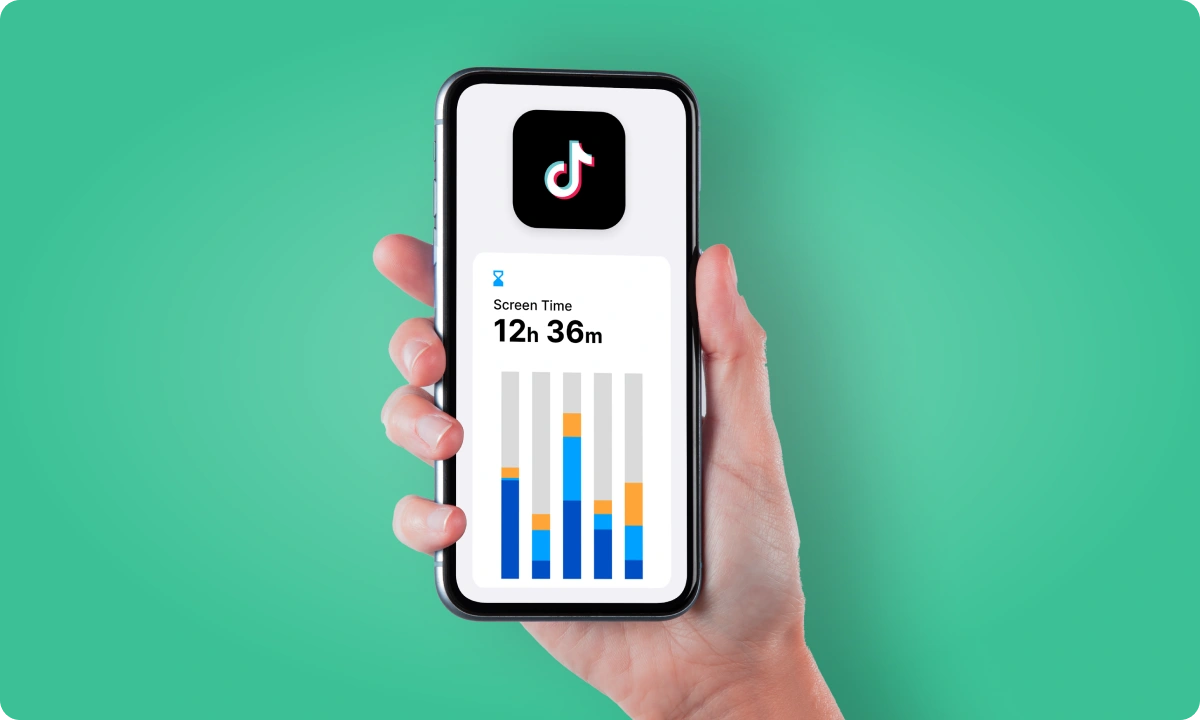Ever sat down to get something done, then noticed it’s 30 minutes later and you’ve barely started? That’s digital distraction in action.
Phones buzz. Tabs multiply. Messages drop in just as you hit your stride. The problem is constant interference baked into the tools we use daily. This results in fractured attention and tasks that drag out longer than they should.
But this isn’t unfixable. With the right habits and some smarter choices, it’s possible to limit these distractions and actually finish what you started. We’ll walk you through the most effective ways to take back your focus and reduce time-wasting interruptions.
What is digital distraction?
Digital distraction happens when your attention gets hijacked by devices, notifications, or content that pulls you off-task. Think:
- Checking a message
- Switching browser tabs
- Reacting to pings
- Scrolling through social media out of habit
These aren’t harmless moments, but they chip away at keeping your focus.
And there’s design behind it. Most apps and platforms run on reward systems meant to keep you interested. Dopamine hits from likes, alerts, or message previews trigger compulsive use. Even a silent phone on your desk can lower your ability to concentrate.
This raises the question: how do you avoid digital distractions when they’re built into your routine?
Impact of digital distractions
These online distractions can wreck your focus, eat up your time, and mess with how your brain works. Here’s a run down of what really happens when pings, pop-ups, and app-hopping take over your day:
1. Productivity tanks
You get interrupted mid-task. Maybe it’s a personal message. Maybe it’s an Instagram reel. Either way, the damage is done. Research from UC Irvine says it takes about 23 minutes and 15 minutes to fully refocus after each interruption. Now imagine that happening five times an hour.
2. Your brain gets fried
Switching from tab to tab sounds efficient. It’s not. Your brain needs time to recalibrate with every change. That reorientation builds mental fatigue, leads to more mistakes, and reduces the quality of whatever you’re working on.
3. Attention span? Gone.
We’ve trained our minds to flit from one thing to another. The result? A shorter attention span that makes it hard to read, learn, or create anything with real depth.
4. Stress levels spike
You might think you’re in control, but your nervous system says otherwise. Constant notifications, especially the ones tied to work or social feedback, raise cortisol and increase anxiety. Your phone isn’t just distracting you. It’s stressing you out.
5. Sleep takes a hit
Late-night scrolling doesn’t just eat time. It disrupts melatonin production, keeps your brain active longer, and delays sleep. If you’re waking up groggy, your screen time might be why.
6. Tasks take longer
Instead of knocking out a task in one focused session, distractions create stop-start patterns. That delay adds up and drags down your efficiency.
How to avoid digital distractions
Time to get tactical. These are simple but effective ways to limit virtual distractions and build a routine that keeps your head in the game. Use them together for the best effect:
1. Turn off unimportant notifications
Your phone’s trying to sabotage you. Pings from group chats, shopping apps, or that game you haven’t played in weeks? Mute them.
Go into your device settings and toggle off anything that doesn’t genuinely matter. Activate Focus Mode or Do Not Disturb during work blocks.
You’ll be surprised how much attention you claw back just by cutting the background noise.
2. Get your phone out of your line of sight
Even a phone flipped over on your desk can mess with your brain. Don’t believe it? Researchers have shown that just seeing your phone lowers cognitive performance.
Put it in a drawer. Leave it in another room. If you need it close by, keep it face down and silent. Out of sight, out of mind, literally.
3. Use BlockSite to cut off the time-wasters
If you’re serious about learning how to block digital distractions, BlockSite’s site blocker got your back. It’s purpose-built for this stuff. With it, you can:
- Block individual apps and websites
- Schedule your focused work sessions
- Activate Focus Mode to stop interruptions cold
- Create custom blocked pages with messages to remind you why you’re avoiding certain sites
- Sync your settings across desktop and mobile
You can also block by category (say, social media or entertainment), or use keyword filters to knock out distractions in one shot.
4. Time-block your day
Time blocking works because it turns your calendar into a decision-making system. Instead of reacting all day, you’ve already made the call.
Set aside chunks of time for real work and breaks too. No multitasking, no bouncing between tabs. Just one task at a time, done right.
5. Declutter your digital space
You wouldn’t try to work on a desk covered in junk, right? Same rule applies to your screen.
- Shut down unused tabs
- Log out of email if you’re not checking it
- Close apps that are just sitting there in the background
Keep your screen lean to stay on task.
6. Build in micro breaks
Working nonstop doesn’t make you productive, it burns you out. Try the Pomodoro technique: 25 minutes on, 5 minutes off.
But here’s the catch: don’t spend your break scrolling.
Get up, stretch, grab some water. Treat breaks like part of your productivity system and not as escape routes.
7. Spot what trips you up
Distractions don’t happen randomly. There’s always a trigger:
- Boredom
- Anxiety
- The urge to procrastinate
Catch yourself in the act. What are you doing right before you open Instagram or check the news again? Once you see the pattern, you can interrupt it.
8. Set up no-tech zones
Not every part of your life needs a screen in it. Keep your phone out of the bedroom. Don’t bring it to the dinner table.
Define a few areas (your reading corner, your workout space, the kitchen) where devices aren’t welcome. These boundaries give your brain room to breathe.
Reclaim your focus, one tab at a time
Distractions aren’t going anywhere. They’re baked into the apps, notifications, and feeds we use every day. But here’s the good news: you don’t have to play along.
Regardless if you’re trying to hit a work deadline, prep for exams, or just stay present during dinner, you’ve got tools and tactics at your disposal. Start small: silence the pings, tidy your desktop, keep the phone out of arm’s reach. You know the drill.
Then take it up a notch with BlockSite. It’s built to do one thing: help you stay focused. Block the sites and apps that trip you up. Set timers. Schedule blackout sessions. Add a custom message to remind yourself why you’re doing this in the first place.
You’ll stop relying on willpower alone—and that’s the point. No one has infinite focus, but you can make better use of the attention you’ve got.
Focus is a limited resource. Treat it like one.
FAQs
How do you avoid digital distractions while studying?
Switch off the noise, literally. Mute notifications, stash your phone, and block time-wasting sites. Study in chunks with breaks built in. Keep your space clean and uncluttered.
What are the best ways to avoid digital distractions at work?
Time-block the most important tasks. Use BlockSite to block off the junk. Close extra tabs. Silence your phone. Schedule breaks so you don’t burn out by 2 PM.
How to remove digital distractions during online meetings?
Kill the background noise. Shut extra tabs, silence notifications, and switch to full-screen mode. No need to multitask your way into missing the point.
Can website blockers really help avoid distractions?
Absolutely. Tools like BlockSite make it harder to slip. They block sites, schedule focused work time, and give your brain fewer excuses to wander. Great for both intensive work and study.
Why is it hard to avoid digital distractions?
Because the system’s rigged. Apps are built to keep you hooked. Notifications and endless scrolls tap into your brain’s reward loop. Without clear limits, the pull is constant.





